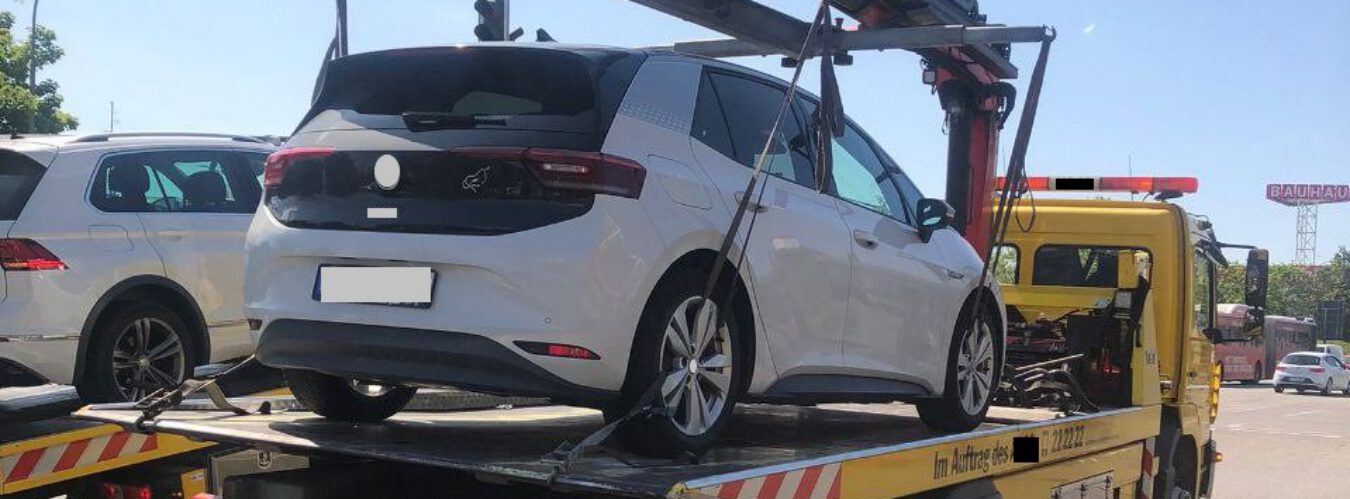This page describes events and information that I have collected about my accident with my electric car.
In the following, I would like to summarize what information I was able to have read from the vehicle and what evidence speaks against the values from the accident data memory. What efforts I made with my own expert and where the limits were and the dependence on the manufacturer began. Great attention will also be paid to the cooperation with the manufacturer itself, in particular the activities of the accident research department.
A very important point is also the other people affected who have inexplicable accidents with similar products from this manufacturer. There are now 40 of us and more are joining regularly.
One of the most spectacular cases was this one, in which there is not even an accident data memory, which suggests that the collision took place very slowly and that the brake and accelerator were not mixed up, as is often assumed. In that case, the driver would have hit the tree at full throttle and there would definitely have been an accident data memory.

To say it up front: after all my experiences with customer service, I would never buy another vehicle from this company, nor do I have any confidence in the control of the ever-advancing driver assistance systems. I can certainly understand that there are initial difficulties in the development of new technologies. But I consider the risk assessment made here to be sufficiently piquant and even negligent.
Two days after the launch of the homepage, the manufacturer sent me a further statement in which he points out the incompleteness of his tests. Nevertheless, he continues to emphasize that there is no doubt that the car has no defect.
And holy shit: there is a test procedure description “self-accelerator” for a car.

“Thank you for your further message.
- protocol workshop, test procedure description (PAB)
The test drive carried out by the workshop with the vehicle was unremarkable, the PAB on the subject of “self-accelerator” was not completed by the workshop as requested and is therefore not available (only the PAB “brake”).”
In this test procedure description, the brake and accelerator pedal are applied simultaneously and tested to see whether the car slows down. I would have expected a test in the sense of what faults were present in the fault data memory around the time of the accident and could these have added up to a scenario that makes a system or brake failure likely.
capacitive buttons
This week (28.7.2024) I received the following article via several channels:
capacitive buttons cause accidents
It is possible that unintentional activation of ACC (adaptive cruise control) explains some of the accidents mentioned here. But not all of them. It should be possible to deactivate ACC immediately when the brakes are applied. It should also not work when reversing. And most importantly: there should be no entry in the accident data memory in the accelerator pedal position field due to a driving command by the driver assistance system.
